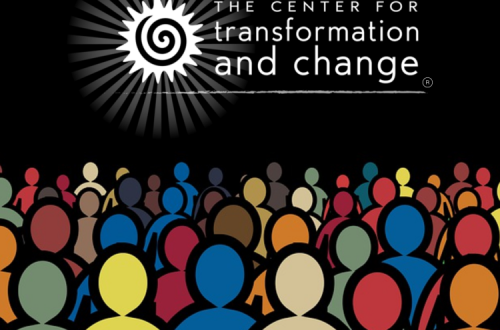Bullying in the Workplace: Had Enough?
Bullying is immersed in our culture: in school, at work, and even online. My fear is you’ve experienced it.
Like an epidemic, it spreads. Workplace bullying can lead to lawsuits, a loss of morale among employees and higher rates of absenteeism, along with countless other unproductive, harmful consequences.
If you’ve experienced bullying in the workplace, you need to formulate a plan to alleviate the situation. Tolerating it isn’t the answer; that merely perpetuates it.
You want to be courageous, to take a stand against bullying – but you’re afraid of retaliation. Your fears may be heightened if the bully is your boss, or someone in a leadership position.
There are steps you can take. It may not be easy, but we cannot accept or ignore bullying in the workplace – or anywhere else. If we do that, we send the message that it’s “not a big deal” or “just the way it is” – which could even result in the bullying intensifying.
A Bully Pushed Your Buttons. Now What?
You’re doing your job, thinking it’s just another regular day. Then it happens: An incident pushes your buttons. Someone bullies you. Or maybe you witness a co-worker being bullied.
You’ve been triggered.
You experience the common fight, flight, or freeze reaction. Your heart races, your breath is short and quick, and you feel a sensation of being on high alert. You want to shut down or run away…or maybe even call out the bully.
How do you respond? You need your job, and most of the time you enjoy your work. You don’t know what to do. This can make just about anyone feel powerless.
Whether or not you walk away – or confront the bully – you need to have a plan in place to prevent its reoccurrence.
Take the First Step to Address Bullying
If you have a Human Resources department in your organization, reaching out to them is the first step. Begin by explaining that you’re seeing a pattern with bullying, people are reporting it, but you couldn’t find a bullying policy. Asking for assistance with the issue will reveal the organization’s stance on the matter.
If your organization is in the early stages of developing greater equity and inclusion, perhaps a survey had been taken to note
discrimination/exclusion incidents, as well as the satisfaction level among employees.
If a survey hasn’t been done to highlight exclusion/discriminatory practices, you might want to work with HR to develop an employee survey, noting:
- Work climate: on a scale of zero to ten, how inclusive is the organization?
- How often do you experience dynamics that you don’t belong?
- How often do you observe or experience dynamics that you might call bullying?
If your organization has had no inclusion training, this might not be an option. If this is the setting at your organization, a more general survey, simply noting employee satisfaction/dissatisfaction, may be the starting point.
It is always useful to disaggregate the data by group membership IF there are enough members of marginalized groups in the organization to ensure anonymity.
When Your First Step Results in Frustration Only
In my experience, I’ve often found HR compared to Swiss cheese: there can be a whole lot of holes to fall through. Is this the case at your organization?
At that point, I would search online to find workshops that offer solutions. The Southern Poverty Law Center has anti-bullying work for grades K-12. My guess is that by diligent searching, you can find workshops that address adult workplace issues.
The Workplace Bullying Institute provides a wealth of information on bullying, from workplace surveys, research, impact and suggestions. Some of the highlights of their 2017 WBI U.S. Workplace Bullying Survey:
- 60% of bullying targets are women
- Latinos/as, Hispanics are the most frequently bullied race
- 61% of bullies are bosses
- To stop it, 65% of targets lose their original jobs
Looking at those statistics is painful. One must weigh their choice of action on a personal basis: analyzing the pros and cons of their decision before taking any action.
Bullying in the Workplace Used As a Weapon
During my decades of work with organizations, I’ve heard many stories regarding the results of actions taken to address unacceptable behaviors. While bullying is real and occurs far too frequently, occasionally, an employee who is being held accountable for underperformance might accuse the supervisor of bullying them as a way to deflect and avoid taking responsibility for their actions/inactions.
At that point, it is important to involve HR to explore the full picture of the organizational dynamics, including:
- How did the supervisor engage the employee?
- How is the employee defining bullying?
- What are the specific concerns of the supervisor with respect to the employee’s performance?
- Might the supervisor have any implicit bias that is/are impacting their perspectives?
- Might the employee be reacting out of bias as well?
Examine the current policies that are (or aren’t) in place as a starting point to move forward. A recent Forbes article, 5 Ways to Shut Down Workplace Bullying, highlights an important point you need to keep in mind: anytime the situation could involve something outright illegal or with potential legal ramifications (i.e. violence, safety issues, sexual harassment), it is not something to handle on your own.
No Quick Fix for Workplace Bullying
There is no easy answer to stop bullying in the workplace.
You may choose to take action in your organization – or you may choose to seek employment elsewhere. Whatever you choose, you must feel comfortable with your decision.
“Each of us deserves the freedom to pursue our own version of happiness. No one deserves to be bullied.”
Barack Obama
Everyone deserves to work in an environment where they can feel safe and respected. At the Center for Transformation and Change®, we offer a comprehensive range of trainings to help organizations better achieve their equity and inclusion goals. Learn more about our upcoming events here.






